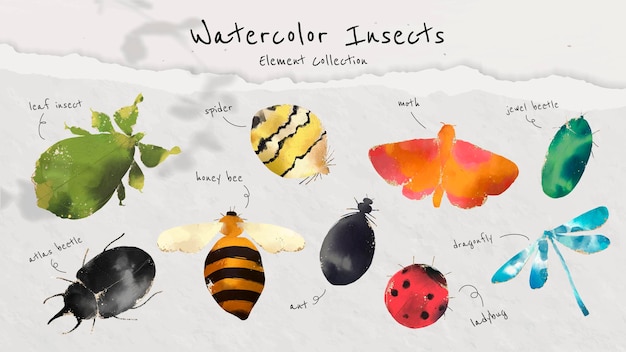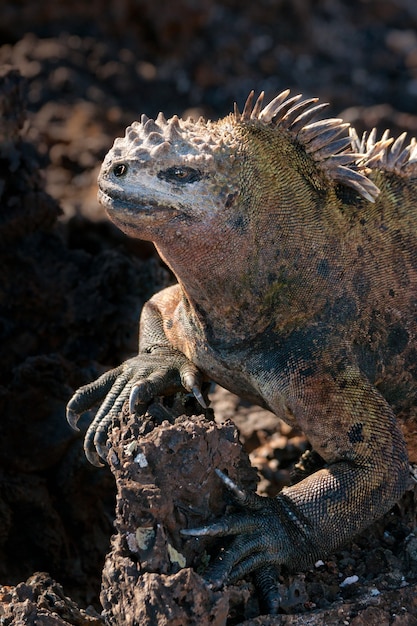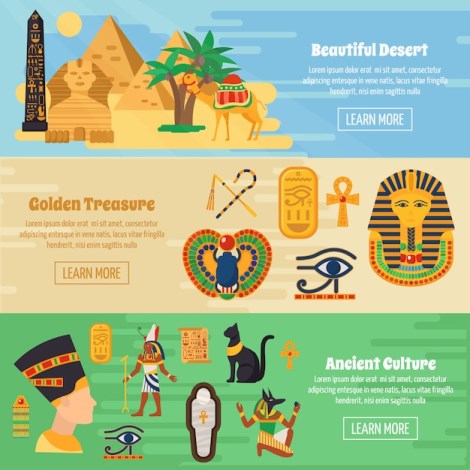Amazing Facts about Blueberries
Blueberries are considered one of the world’s healthiest foods.
Blueberries are rich in antioxidants, which help fight off free radicals in the body.
Blueberries are native to North America.
The blue color of blueberries comes from anthocyanins, which are a type of pigment.
Blueberries are a great source of vitamins C and K.
Blueberries are low in calories, making them a guilt-free snack.
Blueberries can help improve memory and cognitive function.
Blueberries have a sweet and tangy flavor that pairs well with both sweet and savory dishes.
Blueberries are a popular ingredient in desserts, such as pies and muffins.
Blueberries can be eaten fresh, frozen, or dried.
Blueberries are a natural source of fiber, promoting healthy digestion.
Blueberries are a popular ingredient in smoothies and juices.
Blueberries grow on bushes that can reach up to 6 feet in height.
Blueberries are commercially grown in many countries, including the United States, Canada, and Chile.
Blueberries have a long shelf life, making them a convenient fruit to have on hand.
Blueberries are believed to have anti-inflammatory properties.
Blueberries can help lower blood pressure and reduce the risk of heart disease.
Blueberries are often referred to as brain berries due to their potential cognitive benefits.
Blueberries contain a compound called pterostilbene, which may have cancer-fighting properties.
Blueberries are a natural source of resveratrol, a compound known for its anti-aging benefits.
Blueberries can be used as a natural food dye due to their vibrant blue color.
Blueberries are great additions to salads, adding a burst of flavor and color.
Blueberries can be used to make jams and preserves.
Blueberries can help improve vision and eye health.
Blueberries have a high water content, keeping you hydrated.
Blueberries are a popular choice for breakfast cereals and oatmeal.
Blueberries are often included in detox diets and cleanses due to their cleansing properties.
Blueberries contain compounds that may help prevent urinary tract infections.
Blueberries are a natural source of prebiotics, promoting a healthy gut microbiome.
Blueberries can help boost the immune system, thanks to their high vitamin C content.
Blueberries are a versatile ingredient that can be used in both sweet and savory dishes.
Blueberries are a smart choice for weight loss, as they are low in calories and high in fiber.
Blueberries are often included in antioxidant-packed smoothies for an extra health boost.
Blueberries can be added to yogurt or oatmeal for a flavorful and nutritious breakfast.
Blueberries are a popular ingredient in fruit salads and parfaits.
Blueberries are rich in flavonoids, which have been linked to a reduced risk of chronic diseases.
Blueberries have a naturally sweet taste that can satisfy sugar cravings.
Blueberries can be incorporated into baked goods like pancakes, waffles, and cookies.
Blueberries are a refreshing addition to summer drinks and cocktails.
Blueberries have a low glycemic index, making them suitable for individuals with diabetes.
Blueberries are a brain-boosting snack for students during exams.
Blueberries are a source of natural energy, making them a great pre- or post-workout snack.
Blueberries are a delicious and healthy alternative to sugary snacks.
Blueberries have been used for centuries in traditional medicine for their healing properties.
Blueberries are a small but mighty fruit that packs a big punch in terms of flavor and nutrition.
Fun Blue Whale Facts for Kids
Blue whales are the largest animals on Earth, growing up to 100 feet long.
Blue whales have a heart the size of a small car.
Their tongues alone can weigh as much as an elephant.
Blue whales can eat up to 4 tons of tiny shrimp-like animals called krill in a day.
They have pleated throats that expand to gulp huge amounts of water and krill.
Blue whales are called blue because they appear blue in the water.
Their skin is actually gray, but their blubber makes them look blue.
Blue whales are great singers and their songs travel hundreds of miles underwater.
They use their songs to communicate with other blue whales.
Blue whales can swim at speeds up to 30 miles per hour when they want to.
They have a blowhole on top of their heads that shoots water up to 30 feet in the air.
Blue whale mothers are pregnant for about 12 months and give birth to a 2-ton calf.
Their calves can drink up to 50 gallons of milk every day.
Blue whales have two blowholes, which is a unique feature among whales.
They are gentle giants and are known for their peaceful behavior.
Blue whales travel in small groups called pods.
A single blue whale can eat up to 40 million krill in a day.
Blue whales have baleen plates instead of teeth, which they use to filter out the water and keep the krill.
A blue whale’s heart beats only around 5 times per minute.
Blue whale calves can gain 200 pounds every day during their first year.
Blue whales can live for about 70 to 90 years.
They have a long and slender body with a small dorsal fin.
Blue whales are found in all oceans around the world, except the Arctic.
Their population was severely affected by whaling in the past, but now they are a protected species.
Blue whales have a layer of blubber that helps them to keep warm in cold waters.
They can consume up to 7,715 pounds of krill in a single day.
Blue whales are the loudest animals on Earth, their calls can reach 188 decibels.
They can be seen breaching (jumping out of the water) occasionally.
No other animal on Earth is bigger than a blue whale.
Blue whales have very few natural predators due to their size, but they can be hunted by killer whales and sharks.
They are able to go without breathing for up to 90 minutes, but typically surface every 15 minutes.
Blue whales are considered an endangered species, and conservation efforts are being made to protect them.
Their unique fluke, or tail, can be used to identify individual blue whales.
They have about 400 baleen plates on each side of their mouth.
Blue whales have a distinctive heart-shaped blow pattern.
Their flippers can grow up to 10 feet long.
Blue whales can be spotted by the spouts of water they release when they breathe.
They are known as gentle giants because of their peaceful nature.
Blue whales are more closely related to humans than they are to any other type of mammal.
They have a highly developed sense of hearing, essential for communication underwater.
Blue whales have been observed to engage in playful behavior, such as rolling in the water or slapping their tails.
They have a layer of blubber that can be up to a foot thick, helping them to stay warm in cold waters.
Blue whales are migratory animals, traveling long distances to find food and mates.
They can consume more than 5,500 pounds of krill in a single day.
Blue whales are a symbol of the beauty and diversity of marine life, and a reminder of the importance of conservation.
Fascinating Facts about Benjamin Banneker
Benjamin Banneker was a self-taught mathematician, astronomer, and inventor.
Banneker was born on November 9, 1731, in Ellicott’s Mills, Maryland.
He was the first African American to publish a scientific almanac.
Banneker’s almanac included daily tide tables, astronomical events, and weather forecasts.
He constructed his own wooden clock using only a pocket watch as reference.
Banneker helped survey the lands for the construction of Washington, D.C., and provided recommendations for its layout.
He corresponded with Thomas Jefferson, challenging his beliefs on race and advocating for the abolition of slavery.
Banneker accurately predicted a solar eclipse in 1789.
He studied the behavior of cicadas and documented their life cycles.
Banneker designed a wooden irrigation device to improve farming and reduce soil erosion.
He was highly respected by his peers for his mathematical abilities.
Banneker’s accomplishments were even more remarkable considering the barriers he faced as an African American in the 18th century.
His knowledge of astronomy helped him accurately calculate geographical distances.
Banneker was influenced by the works of Isaac Newton and Thomas Jefferson.
He used a telescope to observe celestial bodies and make astronomical calculations.
Banneker’s contributions to surveying were instrumental in the establishment of the boundary lines between Maryland and Pennsylvania.
His almanacs included writings on diverse topics, such as medicinal herbs and farming techniques.
Banneker believed in the power of education and encouraged others to pursue knowledge.
He advocated for the integration of schools and equal access to education.
Banneker’s legacy paved the way for future African American scientists and mathematicians.
His accomplishments challenged the prevailing notion that African Americans were intellectually inferior.
Banneker’s work laid the foundation for future advancements in astronomy and mathematics.
He was a strong advocate for social justice and equality.
Banneker’s writings showcased his eloquence and critical thinking skills.
He dedicated his life to intellectual pursuits and the pursuit of knowledge.
Banneker’s almanacs were widely acclaimed for their accuracy and comprehensiveness.
He was recognized for his contributions by prominent figures, such as George Washington and Thomas Jefferson.
Banneker’s legacy continues to inspire generations of African American scholars and scientists.
His contributions to science were groundbreaking, considering the limited resources available to him.
Banneker’s work challenged stereotypes and racial biases.
He used his mathematical skills to solve practical problems and improve daily life.
Banneker’s clock, known as the Banneker timepiece, is considered a remarkable engineering feat.
He faced discrimination and prejudice throughout his life but persisted in his pursuit of knowledge.
Banneker’s meticulous observations of the stars helped improve navigation techniques.
He was an outspoken critic of slavery and used his platform to advocate for its abolishment.
Banneker’s almanacs contained thought-provoking essays on topics such as freedom and equality.
He was a role model for African Americans, demonstrating that intellectual prowess knows no racial boundaries.
Banneker’s contributions to science and mathematics were groundbreaking during a time when African Americans were typically denied these opportunities.
He used his knowledge of astronomy to challenge misconceptions and promote equality.
Banneker’s dedication to science and education laid a foundation for future advancements.
His life serves as a reminder of the importance of perseverance and determination in the face of adversity.
Banneker’s talent and intellect continue to inspire and motivate aspiring scientists around the world.
He serves as a symbol of African American excellence and achievement.
Banneker’s clock is considered a historical artifact and a testament to his ingenuity.
His legacy reminds us of the importance of recognizing and celebrating the contributions of historically marginalized individuals.
Fascinating facts about bees for kids
Bees are small insects that are important for our environment.
Bees have six legs and two pairs of wings.
Bees are excellent pollinators and help plants grow.
Bees live in colonies and have a queen bee who leads them.
Bees make delicious honey that we can eat.
Bees communicate with each other by dancing.
Bees have a special substance called beeswax that they use to build their hives.
Bees have a very good sense of smell, which helps them find flowers.
Bees have different jobs within the colony, such as worker bees and drone bees.
Bees have fuzzy bodies that help them collect pollen from flowers.
Bees can see colors that humans can’t, like ultraviolet.
Bees are not aggressive, but they can sting if they feel threatened.
Bees are responsible for pollinating many different types of crops, including fruits, vegetables, and nuts.
Bees play a vital role in maintaining biodiversity.
Bees have been around for millions of years and are one of the oldest insects on Earth.
Bees work together as a team to accomplish tasks.
Bees are important for the production of many of our favorite foods, like chocolate and strawberries.
Bees are attracted to flowers because of their sweet nectar.
Bees create hexagonal cells in their hives to store honey and raise their young.
Bees are fascinating creatures that have captured the imagination of people for centuries.
Bees are active during the day and rest at night.
Bees have a buzzing sound when they fly, caused by the flapping of their wings.
Bees are natural architects, building complex hives with precision.
Bees can fly at speeds of up to 15 miles per hour.
Bees have hairs on their bodies that collect pollen as they move from flower to flower.
Bees are capable of recognizing human faces.
Bees have a unique way of finding their way back to the hive, using landmarks and the sun’s position.
Bees have a special type of stomach called a honey stomach, where they store nectar to make honey.
Bees have been used for thousands of years in traditional medicine for their healing properties.
Bees have a special dance called the waggle dance to communicate the location of food sources to other bees.
Bees have been known to travel up to five miles away from their hive in search of nectar.
Bees are experts at pollination, transferring pollen from the male parts of a flower to the female parts.
Bees have a close relationship with flowers, as they rely on them for food and flowers rely on them for pollination.
Bees are hard workers, visiting up to 5,000 flowers in a single day.
Bees are essential for maintaining healthy ecosystems by pollinating plants that provide habitat and food for other animals.
Bees are highly adaptable and can thrive in many different environments, from forests to cities.
Bees have a short lifespan, with worker bees typically living for only a few weeks.
Bees have been a source of inspiration for many artists, writers, and poets throughout history.
Bees have been domesticated by humans for thousands of years to produce honey.
Bees have a positive impact on our economy through the pollination of crops.
Bees play a crucial role in the reproduction of plants, leading to the growth of new generations.
Bees are not only important for food production but also for the production of natural remedies, such as beeswax and propolis.
Bees have a complex social structure within their colonies, with different roles and responsibilities for each bee.
Bees have an incredible memory, being able to remember flower locations and navigate back to their hive.
Bees are a symbol of hard work, cooperation, and the importance of nature in our lives.
Exploring the Facts of Autism Awareness Month
Autism is a spectrum disorder, meaning that each individual with autism is unique and may experience different challenges and strengths.
Autism cannot be cured, but early intervention and support can greatly improve outcomes for individuals with autism.
People with autism often have exceptional abilities in areas such as math, music, art, and memory.
Autism affects more than 1 in 100 children globally, making it one of the most prevalent developmental disorders.
Autism awareness month aims to promote understanding and acceptance of individuals with autism.
Many individuals with autism have sensory sensitivities, meaning they may be over or under sensitive to certain sounds, tastes, or textures.
Difficulty with social communication and interaction is a common trait in autism.
Autism affects individuals of all races, ethnicities, and socioeconomic backgrounds.
Autism is a lifelong condition, but with the right support, individuals with autism can lead fulfilling and independent lives.
Autism is not caused by bad parenting or vaccines, as some myths suggest.
Early signs of autism can include delayed speech, lack of eye contact, and repetitive behaviors.
Sensory overload can be overwhelming for individuals with autism, leading to meltdowns or shutdowns.
Autism is not a disease to be cured but a neurological difference to be understood and embraced.
Many successful individuals in various fields, such as Albert Einstein and Temple Grandin, are believed to have had autism.
Autism is not always visible, as some individuals may have what is known as hidden autism or high-functioning autism.
Everyone’s autism journey is different, and it’s important to respect individual experiences and needs.
Autism awareness month encourages inclusivity and acceptance in schools, workplaces, and communities.
Sensory-friendly environments, such as quiet spaces or noise-cancelling headphones, can greatly benefit individuals with autism.
Autism is more commonly diagnosed in boys than girls, but this may be due to underdiagnosis in girls.
Applied Behavior Analysis (ABA) therapy is a widely used intervention for individuals with autism, focusing on teaching adaptive skills and reducing problem behaviors.
Autism is a lifelong condition, and support is needed throughout all stages of life, from childhood through adulthood.
Individuals with autism have the same rights and deserve the same opportunities as anyone else.
Many individuals with autism have unique talents and perspectives that can greatly contribute to society.
Autism acceptance means understanding and appreciating neurodiversity, rather than trying to fit everyone into a neurotypical mold.
Social stories and visual supports can help individuals with autism navigate social situations and daily routines.
Many individuals with autism excel in specialized fields or careers that require attention to detail and focus.
Autism can coexist with other conditions, such as ADHD, anxiety, or depression, making comprehensive support important.
Autism awareness implies the recognition of the challenges individuals with autism face, but also the celebration of their strengths.
The autism community is diverse, and it’s important to listen to and amplify the voices and experiences of autistic individuals themselves.
Autism is not a barrier to love, friendship, or success.
Making small accommodations, such as providing clear instructions or allowing extra processing time, can greatly support individuals with autism.
Sensory-friendly events and spaces promote inclusivity and allow individuals with autism to fully participate.
Autism research is ongoing, aiming to improve understanding, support, and quality of life for autistic individuals.
Encouraging open communication and empathy can foster positive relationships with individuals with autism.
Employment opportunities for individuals with autism should be inclusive and tailored to their skills and strengths.
Autism is not a disorder that can be fixed or erased, but rather a part of someone’s identity that should be embraced and respected.
Educating others about autism can help reduce stigma and misconceptions surrounding the condition.
Acceptance and support are essential for the mental health and well-being of individuals with autism.
Individuals with autism may experience sensory overload in noisy or crowded environments, leading to anxiety or withdrawal.
Early intervention and proper support can greatly enhance the quality of life for individuals with autism and their families.
Sensory-friendly clothing, such as seamless socks or tagless shirts, can help individuals with autism feel more comfortable.
Personalized visual schedules or task organizers are useful tools to help individuals with autism manage their daily routines.
Individuals with autism may have difficulty understanding or interpreting social cues, leading to misunderstandings or social isolation.
Autism awareness month encourages inclusive education, ensuring that individuals with autism have access to learning environments that meet their unique needs.
Supporting autism awareness means recognizing the value of every individual, regardless of their neurodiversity, and fostering a more inclusive and accepting society.
Australian Shepherd Facts – Everything You Need to Know About This Versatile Breed
Australian Shepherds, despite their name, were actually bred in the United States.
Australian Shepherds have a natural instinct for herding livestock, which makes them excellent working dogs.
Unlike some other herding breeds, Australian Shepherds are known for their versatility and adaptability.
Australian Shepherds come in a variety of coat colors, including black, blue merle, red merle, and red.
Despite their medium-sized build, Australian Shepherds are incredibly agile and can move quickly and effortlessly.
Australian Shepherds are highly intelligent and are known for their problem-solving skills.
Australian Shepherds have a strong work ethic and thrive on having a job to do.
Australian Shepherds are known for their unwavering loyalty and devotion to their owners.
Australian Shepherds are highly trainable and excel in various dog sports such as agility, obedience, and herding trials.
Australian Shepherds are known for their striking eyes, which can come in various colors, including blue, amber, and brown.
Australian Shepherds have a thick double coat that helps protect them from various weather conditions.
Australian Shepherds are generally healthy dogs, but they can be prone to certain genetic health issues, including hip dysplasia and epilepsy.
Australian Shepherds require regular physical and mental exercise to keep them happy and healthy.
Australian Shepherds have a strong instinct to herd, so they may try to herd children or other animals in the household.
Australian Shepherds are known for their exceptional stamina and endurance, which makes them great companions for outdoor activities.
Australian Shepherds have a friendly and outgoing personality, making them great family pets.
Australian Shepherds are often referred to as Aussies for short.
Australian Shepherds are a versatile breed that can excel in various roles, including search and rescue, therapy work, and as service dogs.
Australian Shepherds have a natural inclination to problem-solve, so they may find creative ways to overcome obstacles.
Australian Shepherds have a strong herding instinct, which means they may try to herd their family members by nipping at their heels.
Australian Shepherds are highly adaptable and can thrive in both rural and urban environments.
Australian Shepherds are known for their exceptional memory and ability to remember and recall commands and tasks.
Australian Shepherds have a moderate energy level and are known for being able to switch from active to calm mode when in the home.
Australian Shepherds are highly social dogs and thrive on human companionship.
Australian Shepherds are known to be protective of their family members and make excellent watchdogs.
Australian Shepherds have a unique and expressive bark that they use to communicate with their owners.
Australian Shepherds have a strong prey drive, which means they may chase after small animals such as squirrels or rabbits.
Australian Shepherds have a natural instinct to round up their family members and keep them together in one place.
Australian Shepherds have a sensitive and intuitive nature, making them highly attuned to their owner’s emotions.
Australian Shepherds are known for their exceptional problem-solving skills and ability to think independently.
Australian Shepherds have a strong desire to please their owners, which makes them highly trainable.
Australian Shepherds have a strong herding instinct, which means they may try to herd other pets in the household.
Australian Shepherds are highly adaptable to different weather conditions, making them suitable for various climates.
Australian Shepherds are known for their exceptional eye contact and ability to anticipate their owner’s needs.
Australian Shepherds have a moderate shedding level and require regular grooming to keep their coat healthy.
Australian Shepherds have a unique ability to understand and pick up on their owner’s body language and cues.
Australian Shepherds have a strong sense of intuition and can often sense danger or changes in their environment.
Australian Shepherds are highly social dogs and enjoy being part of the family’s activities.
Australian Shepherds have a strong herding drive and may try to round up children or other pets.
Australian Shepherds have a strong desire to be mentally stimulated, and puzzle toys or interactive games can help keep them entertained.
Australian Shepherds have a strong inclination to be involved in all family activities and prefer not to be left alone for long periods.
Australian Shepherds have a unique ability to learn complex commands or tricks quickly.
Australian Shepherds have a strong instinct to protect their family members and property.
Australian Shepherds have a friendly and outgoing nature, which makes them great companions for outdoor adventures.
Australian Shepherds have a natural talent for performing tricks and can often learn new ones with ease.
Fascinating Facts about Apple
Apples are one of the most popular and widely consumed fruits in the world.
There are more than 7,500 known apple varieties worldwide.
Apples come in a variety of colors, including red, green, and yellow.
Apples are a great source of fiber and vitamins.
The saying an apple a day keeps the doctor away holds some truth, as apples are known to have numerous health benefits.
Apple trees can live for up to 100 years.
The average apple contains about 25 grams of carbohydrates and only about 95 calories.
Apple seeds contain trace amounts of cyanide, but you would need to eat a lot of them for it to be harmful.
Apples are the state fruit of New York.
The world’s largest apple peel was created by Kathy Wafler Madison in Rochester, NY in 1976. It measured 172 feet 4 inches long.
China is the leading producer of apples in the world.
The only apple native to North America is the crabapple.
Apples float in water because they are 25% air.
Apple trees are part of the rose family.
Apples ripen faster at room temperature than if refrigerated.
Apples can help whiten and brighten teeth.
The ancient Greeks and Romans used apples as symbols of love and beauty.
Apple seeds can be used to make oil, which is often used in cosmetics and skincare products.
Apple juice was the first juice to be consumed in space by astronauts.
The science of apple growing is known as pomology.
Apples have been grown for thousands of years, with the first mention of them in ancient literature dating back to 6500 BC.
Apple trees can take four to five years to produce their first fruit.
The world’s largest apple sculpture was created in the shape of Isaac Newton’s head.
Apples can help improve lung function and reduce the risk of respiratory diseases.
Apple trees are susceptible to over 30 different diseases.
The word apple comes from the Old English word æppel.
The average apple contains about 47% water.
Apple trees can have pink or white blossoms.
The largest apple ever picked weighed 3 pounds, 2 ounces.
Apple cider vinegar has been used for centuries for various medicinal purposes.
The world’s largest apple pie weighed over 17,000 pounds.
Applesauce was the first baby food to be sold commercially.
The apple tree is the most widely cultivated fruit tree in the world.
Apple trees need to be cross-pollinated by bees to bear fruit.
Apples help regulate blood sugar levels and can be beneficial for people with diabetes.
Apple picking is a popular seasonal activity in many countries.
The state of Washington in the United States is known for its apple production.
Apple cores left in nature can take up to two months to decompose fully.
The world’s largest apple mosaic was created using 23,000 apples.
Apple skins contain antioxidants that may help prevent certain types of cancer.
The apple pie is considered a classic American dessert.
Apple trees have been grown in England since Roman times.
The apple industry generates billions of dollars in revenue worldwide.
Apple juice was one of the earliest beverages to be canned commercially.
Apples can be used in both sweet and savory dishes, making them a versatile ingredient in the kitchen.
Interesting Facts About Apple
Apple Inc. was founded on April 1, 1976, by Steve Jobs, Steve Wozniak, and Ronald Wayne.
The first Apple computer, Apple I, was sold for $666.66 in 1976.
The Apple logo is derived from the story of Isaac Newton’s discovery of gravity under an apple tree.
Apple is the first company in history to reach a trillion-dollar market value.
The iPhone is the best-selling product from Apple, with over 2 billion sold worldwide.
Apple’s App Store offers more than 2 million apps for iPhones, iPads, and other Apple devices.
Siri, Apple’s virtual assistant, is named after the Norwegian word for beautiful woman who leads you to victory.
Apple headquarters, known as Apple Park, has the world’s largest curved glass panels.
The Apple Watch was the best-selling smartwatch in the world in 20
In 2020, Apple introduced its own processor called Apple Silicon, replacing Intel chips in Mac computers.
Apple’s voice memo app was originally developed by a company called Macromedia before it was acquired by Apple.
Apple’s first tablet, the Newton MessagePad, was released in 1993 but was discontinued due to lack of success.
The iTunes Store was introduced in 2003 and revolutionized the way music is purchased and consumed.
Apple co-founder Steve Jobs was famously known for wearing black turtlenecks and jeans at product launches.
The first Macintosh computer was introduced in 1984, featuring a graphical user interface.
Apple’s design team, led by Jony Ive, is known for its minimalist and sleek product designs.
Apple has its own font called San Francisco, used across its operating systems and devices.
Apple’s loyalty program, Apple Rewards, offers exclusive benefits to frequent buyers.
The most expensive Apple product ever sold is a diamond-encrusted iPhone worth $7.1 million.
Apple’s GarageBand app allows users to create their own music and has been used by famous musicians.
Apple has a strict privacy policy that prioritizes user data protection.
The original iPhone introduced the concept of a touchscreen smartphone to the mass market.
Apple has a recycling program called Apple Renew, where customers can recycle their old Apple products.
Apple has its own music streaming service called Apple Music, competing with Spotify and other platforms.
Apple Siri can recognize up to 21 languages and dialects.
The iPhone X was the first iPhone to have a facial recognition feature called Face ID.
Apple has a dedicated team of employees known as Apple Care, offering technical support and assistance.
Apple was initially called Apple Computer, Inc. but dropped the Computer from its name in 2007.
Over 1.5 billion Apple devices are active globally.
The Apple TV allows users to stream movies, TV shows, and games on their televisions.
Apple’s MacBook Air is one of the thinnest and lightest laptops in the world.
The Apple Pencil is a stylus designed for use with iPads and other Apple devices.
Apple’s iCloud service allows users to store files, photos, and music in the cloud for easy access.
The Apple Card is a credit card created in partnership with Goldman Sachs and offers unique cashback rewards.
Apple’s retail stores, known as Apple Stores, are renowned for their modern and minimalist design.
The Apple Maps app was initially criticized for its inaccuracies but has improved significantly over the years.
Apple has its own programming language called Swift, used for developing iOS and macOS applications.
The Apple Safari browser was introduced in 2003 and is known for its speed and security features.
Apple’s butterfly keyboard design, used in MacBooks, was replaced by the more reliable scissor-switch mechanism.
The Apple HomePod is a smart speaker that competes with products like Amazon Echo and Google Home.
Apple’s FaceTime video calling service was introduced in 2010 and allows users to make video calls across Apple devices.
Apple’s iOS operating system is known for its user-friendly interface and integration across devices.
Apple has a strong focus on renewable energy and aims to be completely carbon-neutral by 20
The 1984 Apple Super Bowl commercial, directed by Ridley Scott, is considered one of the greatest commercials of all time.
Apple’s annual Worldwide Developers Conference (WWDC) showcases new software and technologies for Apple devices.
Interesting Facts about Albert Einstein for Kids
Albert Einstein is one of the most famous scientists in history.
He was born on March 14, 1879, in Germany.
Albert Einstein’s most famous equation is E=mc².
He had a wild and unruly hairstyle that became his trademark.
Einstein’s theory of relativity revolutionized our understanding of space and time.
He won the Nobel Prize in Physics in 1921 for his explanation of the photoelectric effect.
Einstein was a pacifist and spoke out against war and violence.
He was offered the presidency of Israel after its independence but declined.
Einstein was a talented violinist and loved to play music in his free time.
He became a professor of theoretical physics at the University of Berlin in 19
Einstein fled Nazi Germany and moved to the United States in 19
He became a US citizen in 1940 while still maintaining his Swiss citizenship.
Einstein was known for his wit and humor, often making clever and funny remarks.
Despite his intelligence, Einstein didn’t start speaking until he was three years old.
He struggled with school as a child and had trouble fitting into the traditional education system.
Einstein had a strong belief in the power of imagination and creativity.
He loved to ask questions and was always curious about how things worked.
Albert Einstein’s brain was preserved and studied by scientists after his death.
He was a vegetarian and believed in the importance of a plant-based diet.
Einstein was a strong advocate for civil rights and spoke out against racial discrimination.
He was offered the presidency of Israel after its independence but declined.
Einstein’s desk at Princeton University remains exactly as he left it when he died.
He had a close friendship with fellow scientist Niels Bohr.
Einstein’s theory of relativity challenged Isaac Newton’s laws of motion.
He had a love for sailing and spent many hours out on the water.
Einstein was known for his messy handwriting and often had to ask others to decipher it.
He came up with the theory of general relativity while working as a patent examiner.
Einstein had a deep interest in philosophy and often pondered the meaning of life.
He was an advocate for the power of education and believed in lifelong learning.
Einstein was offered the presidency of Israel after its independence but declined.
He had a rebellious spirit and often clashed with authority figures.
Einstein had a great sense of humor and loved to play practical jokes on friends.
He was fascinated by the concept of time travel and often pondered its possibilities.
Einstein was a dedicated scientist and worked tirelessly in his pursuit of knowledge.
He was a founding member of the Hebrew University of Jerusalem.
Einstein’s work paved the way for many technological advancements, including GPS.
He had a strong belief in the power of imagination and creativity.
Einstein’s theory of relativity was confirmed during a solar eclipse in 19
He believed in the unity of the universe and saw connections in all things.
Einstein’s belief in determinism led him to reject quantum mechanics.
He had a love for nature and often found inspiration in the outdoors.
Einstein’s work laid the foundation for the development of nuclear power.
He was known for his humility and often credited others for their contributions.
Einstein’s contributions to science still shape our understanding of the universe today.
He remains an iconic figure and a source of inspiration for generations to come.
Fun Earth Day Facts for Kids
Earth Day is celebrated on April 22nd every year.
It is a day to raise awareness about protecting our planet.
Earth Day was first celebrated in 1970.
Over 190 countries celebrate Earth Day.
Recycling is important to help save our Earth.
Reusing items can reduce waste and help the environment.
Planting trees and plants can help clean the air we breathe.
We should use less water to save this precious resource.
Many animals and plants are becoming endangered due to pollution.
We can help by picking up trash in our neighborhood and parks.
Earth Day reminds us to turn off lights when we leave a room.
Solar energy is a clean and renewable source of power.
Cleaning up our oceans is important to protect sea life.
Conserving energy can help reduce greenhouse gas emissions.
Earth Day encourages us to take care of plants and animals.
Protecting natural habitats is important to preserve biodiversity.
Earth Day reminds us to be mindful of our carbon footprint.
Walking or biking instead of driving can reduce air pollution.
Taking shorter showers can help save water.
Reducing, reusing, and recycling are the three Rs for a sustainable lifestyle.
Earth Day teaches us to conserve energy at home and school.
We can show gratitude to the Earth by planting flowers and gardens.
Using public transportation can help reduce air pollution.
Earth Day reminds us to properly dispose of hazardous waste.
We should choose sustainable products to protect our Earth.
Learning about different ecosystems helps us appreciate the Earth’s diversity.
Earth Day encourages us to reduce our consumption of single-use plastics.
Turning off electronics when not in use saves energy.
Earth Day reminds us to appreciate the beauty of nature.
Composting helps reduce waste and enriches the soil.
Protecting clean water sources is crucial for all living things.
Earth Day inspires us to learn about environmental issues.
Conserving natural resources ensures that they will be available for future generations.
Earth Day reminds us to be mindful of the impact of our choices.
We can participate in clean-up events to make our community cleaner.
Local parks and wildlife reserves are important to preserve nature.
Earth Day celebrates the diversity of ecosystems around the world.
Conserving forests is important for climate regulation and wildlife habitat.
Earth Day encourages us to support eco-friendly businesses.
We can make a difference by spreading awareness about environmental issues.
Earth Day reminds us to reduce water pollution by not littering.
Protecting endangered species is crucial for maintaining Earth’s balance.
Earth Day encourages us to use natural and organic products.
We should teach others about ways to help protect the Earth.
Earth Day reminds us that small actions can make a big difference in preserving our planet.
Crocodile Facts – Fascinating Information about these Ferocious Reptiles
Crocodiles have been around for over 200 million years, making them one of the oldest creatures on Earth.
The largest crocodile ever recorded was over 23 feet long.
Crocodiles can live up to 70 years in the wild.
Female crocodiles are known to be excellent mothers and will fiercely protect their eggs and young.
Crocodiles have a powerful jaw bite, exerting a force of over 5,000 pounds per square inch.
Crocodile skin is highly valued in the fashion industry for its durability and unique texture.
Crocodiles are cold-blooded reptiles, relying on external sources of heat to regulate their body temperature.
Contrary to popular belief, crocodiles can actually gallop on land.
Crocodiles have a special third eyelid called a nictitating membrane that helps protect their eyes underwater.
Crocodiles have an incredible ability to hold their breath for long periods of time, with some species able to stay underwater for up to two hours.
Crocodile tears are a real phenomenon – when they eat, they may release tears to lubricate their throat and prevent damage from their powerful bites.
Crocodile eggs have a temperature-dependent sex determination, meaning the temperature at which they are incubated determines the sex of the hatchlings.
Young crocodiles make a chirping noise instead of roaring like their adult counterparts.
Crocodiles swallow stones and pebbles called gastroliths to help them digest their food.
The name crocodile comes from the Greek words krokódeilos, meaning pebble worm.
Crocodiles have a highly efficient circulatory system that allows them to quickly control blood flow during diving and while in water.
Crocodiles have a keen sense of hearing and sight, but their sense of smell is not as developed.
Unlike alligators, crocodiles have a V-shaped snout and can live in both saltwater and freshwater habitats.
Some species of crocodiles are known to engage in mouth wrestling as a way to establish dominance.
Crocodile skin acts as a camouflage in the water, making them nearly invisible to their prey.
In ancient Egypt, crocodiles were worshipped as sacred animals and were associated with the god Sobek.
Crocodiles have a unique set of sensory organs called pressure receptors on their skin that help them detect prey.
A crocodile’s brain is very small compared to its body size, but it is highly adapted to their specific hunting and survival needs.
Crocodiles have a two-chambered heart, meaning they have less efficient blood circulation compared to mammals and birds.
Crocodile nests can contain up to 50 eggs, but only a few will typically survive to adulthood due to predation and other factors.
Crocodiles are skilled swimmers and can move both forwards and backward in water.
Crocodiles have been known to cooperate with each other while hunting, using teamwork to increase their chances of catching prey.
Crocodiles play a crucial role in their ecosystems by controlling the populations of other animals and scavenging on carrion.
Some crocodile species, such as the saltwater crocodile, are known to travel long distances, sometimes even crossing oceans.
Crocodile scales, called scutes, are made of keratin, the same substance found in human hair and nails.
Crocodiles can generate a tremendous amount of power with their tails, which they use for propulsion in the water and to knock down prey.
Crocodiles have an elevated sensory organ called the integumentary sense organ, which allows them to detect the slightest disturbance in water.
Crocodiles are ambush predators and use their powerful jaws to catch and hold their prey before dragging it underwater to drown.
Crocodile saliva contains bacteria-killing enzymes, which helps prevent infections when they bite their prey that may be carrying harmful bacteria.
Crocodile snouts have special grooves that allow them to close their mouths tightly underwater, preventing the water from entering their throats.
Some species of crocodiles, like the Nile crocodile, have been observed using sticks or twigs to lure birds within striking distance.
The temperature at which crocodile eggs are incubated determines the length of time it takes for the eggs to hatch, with higher temperatures resulting in faster hatching times.
Crocodiles have a unique herding behavior, where they gather in large groups during certain times of the year for mating or nesting.
Crocodiles have the ability to replace their teeth throughout their lives, with some individuals growing thousands of teeth over their lifespan.
The muscles that close a crocodile’s jaw are incredibly powerful, but the muscles that open its jaw are relatively weak, allowing a human to hold a crocodile’s mouth shut with little effort.
Crocodile conservation efforts have been successful in recent years, with some species seeing population recoveries in certain regions.
Crocodiles have a complex vocalization system, which includes growls, hisses, and bellows to communicate with one another.
Crocodile scales have a natural oil coating that makes them resistant to parasites and helps protect their skin from damage.
Crocodile species have different color variations, ranging from pale yellow to dark green or even black, depending on their habitat and age.
Crocodiles have a reputation for being dangerous and deadly predators, but they are also fascinating creatures that play an important role in maintaining the balance of their ecosystems.
Bernese Mountain Dog Facts – Everything You Need to Know
Bernese mountain dogs, also known as Berners, are a majestic and gentle giant breed.
These dogs are known for their striking tri-color coat – black, white, and rust.
Berners have a strong and powerful build, making them excellent working dogs.
Despite their large size, Bernese mountain dogs have a sweet and gentle temperament.
They are incredibly loyal and affectionate towards their family members.
Berners are great with children and are known for their patient and steady nature.
These dogs thrive in cold weather conditions, thanks to their thick double coats.
Bernese mountain dogs are natural herders and have a strong instinct to protect their family.
They are smart and eager to please, making them easily trainable.
Berners have a calm and laid-back demeanor, but they still require regular exercise to stay healthy.
The average lifespan of a Bernese mountain dog is typically around 7 to 10 years.
This breed originated in Switzerland and was initially used as working farm dogs.
Berners are known for their excellent draft and cart-pulling abilities.
They have a distinct and recognizable bark, making them great watchdogs.
Bernese mountain dogs are sociable and get along well with other animals.
They have a medium energy level and are content with moderate exercise.
Berners have a tendency to be food motivated, making them more responsive to training.
This breed is prone to certain health issues, including hip and elbow dysplasia.
Despite their thick fur, Bernese mountain dogs are not suited for hot climates.
They are known for their droopy jowls and expressive, soulful eyes.
Socialization is crucial for Bernese mountain dogs to develop into well-rounded adult dogs.
The breed is known for being gentle and patient with small children.
Berners have a strong desire to be part of the family unit and can become anxious if left alone for long periods.
They are excellent therapy dogs due to their calm and comforting presence.
Bernese mountain dogs love to be outdoors and enjoy participating in activities like hiking and swimming.
Proper grooming is important for Berners to maintain the health and appearance of their coats.
Bernese mountain dogs were originally bred to be watchdogs and farm assistants.
They have a high tolerance for pain, which can make it difficult to detect certain health issues.
Berners are often eager to please and will do anything to make their owners happy.
This breed is known for its gentle and patient nature, making them suitable for families with young children.
Bernese mountain dogs have a calm and confident disposition, which aids in their ability to work with livestock.
They are considered a rare breed, making them highly sought after by dog enthusiasts.
Berners are known for their steady and balanced personalities.
Despite their size, Bernese mountain dogs are known for being gentle and kind.
They have a thick and weather-resistant coat that helps protect them in harsh climates.
Berners are intelligent dogs and thrive on mental stimulation and challenge.
This breed has a strong instinct to protect their family and home.
Bernese mountain dogs have a steady and even temperament, making them excellent therapy dogs.
They have a friendly and outgoing nature, getting along well with both dogs and people.
Berners are known for their expressive eyes, which can convey a range of emotions.
They are known for being great hiking partners, thanks to their endurance and strength.
Bernese mountain dogs have a strong work ethic and excel in tasks such as pulling carts and sleds.
They are gentle with small animals and make loving companions for other pets in the household.
Berners are often described as living teddy bears due to their big, cuddly appearance.
This breed’s intelligence, loyalty, and gentle nature make them a wonderful addition to any family.
Discovering the Fun Facts of Life
Life is like a rollercoaster ride, full of ups and downs.
The average person spends six months of their lifetime waiting at traffic lights.
Laughter is the best medicine – it releases endorphins that make you happy.
You have a higher chance of getting struck by lightning than winning the lottery.
The human brain is more active while sleeping than while watching television.
Smiling is contagious – it can spread happiness to others around you.
The average person spends around six months of their lifetime dreaming.
Your mind can create incredible things if you believe in yourself.
On average, a person will spend about four years of their life on their phone.
Dancing is not only a fun activity but also a great way to keep in shape.
Cats sleep for about 70% of their lives – a true life of relaxation.
The average person blinks around 15,000 times per day without even realizing it.
People who laugh regularly live longer than those who don’t.
Sunflowers follow the movement of the sun across the sky – a beautiful example of nature’s wonder.
The world’s oldest person lived to be 122 years old – a testament to the power of a well-lived life.
The average person will shed around 40 pounds (18 kilograms) of skin in their lifetime.
Singing in the shower boosts your mood and reduces stress.
The sound of waves crashing on the shore has a calming effect on our minds.
People who have a positive outlook on life are more likely to succeed.
Your brain can produce enough energy to power a light bulb.
It’s impossible to hum while holding your nose.
The chance of you being born was about one in 400 trillion – a true miracle!
A person’s handwriting can reveal their personality traits.
Your sense of smell is linked to memory more strongly than any other sense.
The human body is made up of more bacterial cells than human cells.
Laughter lowers stress, boosts your immune system, and relaxes your muscles – it’s truly a superpower.
On average, a person will spend about five years waiting in lines throughout their life.
Life is like a camera – focus on the good times, develop from the negatives, and if things don’t work out, take another shot.
Elephants are the only mammals that can’t jump – a unique fact about the animal kingdom.
The average person will eat approximately 35 tons of food during their lifetime.
Smelling rosemary can enhance memory and cognitive performance.
Life is not about waiting for the storm to pass, but learning to dance in the rain.
The concept of time is a human invention – it doesn’t exist in nature.
The world’s oldest known living tree is over 5,000 years old.
Researchers have found that listening to music releases dopamine, the feel-good chemical in our brains.
The average person will spend about six months of their life searching for misplaced items.
Dolphins are known to give each other names – a fascinating fact about their communication skills.
Each year, millions of trees are planted by squirrels who forget where they buried their food.
Life is like a bicycle – to keep your balance, you must keep moving forward.
The smell of cut grass is a distress signal that plants release when they’re in danger.
The average person will spend approximately six months waiting for their computer to load or update.
Dancing can increase your flexibility, balance, and coordination – it’s a great way to stay active.
People who spend more time outdoors tend to be happier and have lower stress levels.
The human heart creates enough pressure to squirt blood 30 feet (9 meters) in the air – a fascinating fact about our powerful organ.
The most important things in life aren’t things – they’re the experiences, relationships, and memories we create.
Discovering the Fascinating Facts of Wind Energy
Wind energy can power an entire household with just one wind turbine.
The world’s largest wind turbine has blades longer than a football field.
Wind energy is the fastest-growing source of electricity in the world.
Wind turbines can generate electricity even at wind speeds as low as 6 miles per hour.
The world’s largest offshore wind farm is located in the United Kingdom.
Wind energy is a clean and sustainable source of electricity.
Wind turbines can be used to pump water and generate electricity at the same time.
Wind energy helps reduce greenhouse gas emissions and combat climate change.
One wind turbine can offset up to 1,500 tons of carbon dioxide emissions per year.
Wind energy can be harvested on both land and sea.
Wind turbines have been around for centuries and were used for grinding grain, pumping water, and sawing wood.
Denmark generates over 40% of its electricity from wind power, making it the world leader in wind energy.
Wind energy is a domestic source of electricity, reducing dependence on foreign fuel imports.
Wind farms can coexist with agriculture, as the land between turbines can still be used for farming.
Wind energy creates jobs in manufacturing, installation, and maintenance.
There are over 340,000 wind turbines installed around the world.
The iconic Windmills of Kinderdijk in the Netherlands have been in operation for over 250 years.
Wind energy is not affected by fuel price fluctuations, making it more stable and predictable.
Wind turbines have advanced technology that can automatically adjust rotor speed based on wind conditions.
Wind energy can be used to power electric vehicles, reducing reliance on fossil fuels.
Wind turbines make a rhythmic sound known as blade pass due to the rotation of the blades.
Wind energy is renewable and will never run out.
Wind turbines have a lifespan of about 25 years, after which they can be recycled.
Wind turbines can be integrated into urban environments, providing clean energy to cities.
Wind energy can provide power to remote areas without access to the electrical grid.
The first wind turbine for electricity generation was built in 1888 by Charles F. Brush.
Wind turbines have become a popular tourist attraction, with visitors enjoying the breathtaking views from wind farms.
Wind energy can withstand extreme weather conditions, making it a reliable source of electricity.
Wind energy is low-cost compared to traditional forms of energy generation.
Wind turbines have become symbols of sustainability and environmental consciousness.
Wind energy can be combined with other renewable sources such as solar power for a more efficient energy system.
Wind turbines can be painted various colors to blend with the surrounding landscape.
Wind energy creates economic opportunities for local communities through increased tourism and job creation.
Wind turbines have a small land footprint, allowing for other land uses in the same area.
China is the largest producer of wind energy in the world, followed by the United States.
Wind energy is silent, with modern turbine designs reducing noise levels significantly.
Wind turbines help diversify the energy mix, reducing dependence on fossil fuels.
Wind energy reduces the need for traditional power plants, making the electricity grid more resilient.
Wind turbines have a quick installation process, allowing for rapid deployment of clean energy.
Wind farms can create habitat for wildlife, with grazing animals often utilizing the space between turbines.
Wind energy can be stored in batteries for use during periods of low wind.
Wind turbines are designed to automatically shut down in high wind speeds for safety reasons.
Wind energy does not require the use of water for cooling, unlike traditional power plants.
Wind turbines have a high operational reliability, with maintenance requirements being relatively low.
Wind energy has the potential to offset a significant amount of fossil fuel consumption, contributing to a sustainable future.
Fascinating Facts about Possums
Possums are marsupials that belong to the family Didelphidae.
There are over 100 different species of possums.
Possums are native to Australia, New Guinea, and Sulawesi.
The common brushtail possum is one of the most well-known species of possums.
Possums are nocturnal animals, meaning they are most active at night.
Possums have a prehensile tail, which means they can use it to grasp and hold onto things.
Female possums have a pouch on their belly where they carry and nurse their young.
Possums primarily eat vegetation, but they are also known to eat small animals like insects and birds.
Possums have a specialized organ in their stomach called a caecum, which helps them digest plants.
Possums are excellent climbers and are able to scale trees with ease.
Possums have adapted to be able to withstand extremely cold temperatures.
Possums have a strong immune system and are resistant to many diseases, including rabies.
Possums have sharp teeth and can bite if they feel threatened.
Despite their reputation for being pests, possums play an important role in the ecosystem by controlling pests like insects and rodents.
Possums have a unique defense mechanism called playing possum, where they feign death to avoid predators.
Possums have a lifespan of about 2-4 years in the wild.
Possums have adapted to urban environments and are often found in cities and suburbs.
Possums have a keen sense of smell and use it to locate food.
Baby possums are called joeys and are born underdeveloped, requiring them to crawl into their mother’s pouch.
Possums have a relatively low body temperature compared to other mammals.
Possums are excellent swimmers and can cross rivers and streams with ease.
Possums are known for their distinctive hissing and growling sounds when they feel threatened.
Possums are known to have a very high reproductive rate, with some species being able to produce several litters a year.
Possums are territorial animals and mark their territory using scent glands.
Possums are important seed dispersers, as they eat fruit and spread the seeds through their droppings.
Possums have a strong maternal instinct and will fiercely defend their young.
Possums have sharp claws on their feet that help them grip onto branches and surfaces.
Possums have excellent night vision, allowing them to navigate in the dark.
Possums have a varied diet depending on their habitat, including nectar, leaves, flowers, and even garbage.
Possums have a unique reproductive system where the female has two uteri and can produce two litters at the same time.
Possums are solitary animals and prefer to live alone, except during the breeding season.
Possums have a flexible diet and can adapt to changes in food availability.
Possums have a strong sense of hearing, which helps them detect predators.
The ringtail possum gets its name from its long, curled tail that forms a ring.
Possums have a pouch that opens towards their tail, unlike kangaroos and wallabies whose pouches open towards their head.
Possums are highly adaptable and can be found in a variety of habitats, from forests to urban areas.
Possums are not rodents, despite their appearance.
Possums have thumbs on their hind feet, which helps them grip branches and objects.
Possums are excellent jumpers and can leap up to 4 meters in distance.
Possums are known for their unique fur patterns, which vary across different species.
Possums are generally not aggressive towards humans and will only attack if provoked.
Possums use their whiskers to help navigate and sense their surroundings.
Possums are good at camouflage and can blend into their surroundings to avoid predators.
Possums have been introduced to some areas outside of their native range, leading to concerns about their impact on local ecosystems.
Possums have been a part of indigenous cultures, with some tribes considering them to be sacred animals.
Discover Fascinating Facts About Georgia
Georgia is known as the Peach State because it produces more peaches than any other state in the United States.
The Coca-Cola recipe was formulated in Georgia in 1886.
The world’s largest drive-in fast food restaurant, The Varsity, is located in Atlanta, Georgia.
Georgia is home to the Okefenokee Swamp, which is the largest blackwater swamp in North America.
The state of Georgia has more counties than any other state in the United States, totaling to 159.
Savannah, Georgia is home to the United States’ first planned city.
The Appalachian Trail, which spans 2,189 miles from Georgia to Maine, starts at Springer Mountain in Georgia.
The Masters Tournament, one of golf’s most prestigious events, is held annually in Augusta, Georgia.
The state of Georgia was named after King George II of England.
Georgia is the fourth-largest film production location in the United States, earning the nickname Hollywood of the South.
Stone Mountain, located in Georgia, is the largest exposed granite dome in North America.
The world’s busiest airport, Hartsfield-Jackson Atlanta International Airport, is located in Atlanta, Georgia.
Martin Luther King Jr. was born in Atlanta and his childhood home is now a National Historic Site.
Georgia is home to the College Football Hall of Fame, located in Atlanta, celebrating the history of college football.
The Chick-fil-A headquarters is located in Atlanta, Georgia.
Georgia is the only state to have chimpanzees as official state wildlife.
The Southern accent, often associated with Georgia and the South, is ranked as the second sexiest accent in the United States.
Georgia is known for its hospitality and friendly locals.
The state of Georgia has been a filming location for popular TV shows such as The Walking Dead and Stranger Things.
The Georgia State Capitol building in Atlanta is covered with 43 ounces of gold leaf.
The iconic song Georgia On My Mind was written by Hoagy Carmichael and made famous by Ray Charles.
Georgia is home to the World of Coca-Cola, where visitors can learn about the history of this beloved soft drink.
The Georgia Aquarium in Atlanta is the largest aquarium in the Western Hemisphere.
The city of Savannah, Georgia is known for its beautiful historic district, featuring 22 oak-lined public squares.
Georgia is rich in Civil War history, with numerous battlefields and historic sites throughout the state.
Andersonville National Historic Site in Georgia was once home to a notorious Confederate prisoner-of-war camp during the Civil War.
Georgia’s state shell is the knobbed whelk.
The Georgia Bulldogs, University of Georgia’s football team, has a loyal following and fierce rivalry with the Georgia Tech Yellow Jackets.
The coastal town of Tybee Island, Georgia is known for its picturesque beaches and vibrant marine life.
Georgia has a diverse range of wildlife, including black bears, alligators, and red-cockaded woodpeckers.
The Masters Tournament has a traditionally exclusive membership policy at the Augusta National Golf Club, which prohibits female members.
The state of Georgia is known for its vibrant music scene, particularly in the genres of country, rock, and hip-hop.
The Appalachian Mountains in Georgia are home to a variety of hiking trails and stunning scenery.
The sweet Vidalia onion, grown in Georgia’s Vidalia region, is renowned for its mild and sweet flavor.
The iconic Gone with the Wind movie was filmed in various locations throughout Georgia.
The world’s largest granite deposit is located in Elberton, Georgia, earning the city the title of the Granite Capital of the World.
The state of Georgia has its own unique cuisine, including dishes like fried green tomatoes, shrimp and grits, and Brunswick stew.
Georgia has a rich African-American heritage and played a significant role in the civil rights movement.
The state of Georgia experiences a wide range of climates, from subtropical in the south to mountainous in the north.
The city of Atlanta hosted the 1996 Summer Olympics, leaving a lasting legacy of sports infrastructure and venues.
The Big Chicken, a famous fast-food landmark in Marietta, Georgia, is a 56-foot-tall chicken-shaped building.
Georgia is the birthplace of renowned author Flannery O’Connor, known for her Southern Gothic literature.
The Chattahoochee River, spanning through Georgia, offers recreational activities such as fishing, boating, and rafting.
The state of Georgia has several natural wonders, including Amicalola Falls, the tallest waterfall in the Southeastern United States.
Georgia’s state insect is the honeybee, reflecting the importance of beekeeping and honey production in the state.
Amazing Facts About Geckos
Geckos have the incredible ability to stick to walls and ceilings due to their specialized toe pads.
Some gecko species can change their color to blend in with their surroundings, acting as a form of camouflage.
Geckos are mostly nocturnal creatures, preferring to be active during the night.
Unlike most reptiles, geckos have eyelids that they can blink and close.
Some geckos can make sounds such as chirping or barking.
Geckos are known for their unique ability to detach their tails when under threat, with the tail potentially regrowing later.
There are over 1,500 different species of geckos found worldwide.
Geckos are excellent climbers, thanks to their specialized claws and limbs.
Some geckos have a lifespan of up to 20 years or more in captivity.
Geckos have a third transparent eyelid known as a spectacle that helps protect their eyes.
The tokay gecko has one of the loudest calls among geckos, sounding like a loud TO-KAY.
Geckos are not poisonous or venomous; they do not pose any threat to humans.
Geckos have an extraordinary sense of hearing, allowing them to detect even the slightest movements or sounds.
The smallest gecko species, the Jaragua Sphaero, can fit on the tip of a pencil eraser.
Geckos are found on every continent except Antarctica.
Some geckos, like the leaf-tailed gecko, have adaptations that allow them to resemble plant leaves, providing excellent camouflage.
The largest known species of gecko is the New Caledonian giant gecko, which can grow up to 14 inches long.
Geckos have a diet consisting mainly of insects such as crickets, moths, and beetles.
The Mediterranean house gecko can reproduce through parthenogenesis, meaning they can reproduce without mating.
Geckos have a unique ability to walk on surfaces that are both smooth and vertical, thanks to millions of tiny hairs on their feet.
Some gecko species, like the gold dust day gecko, are quite territorial and will defend their territories from intruders.
Geckos have excellent vision, capable of seeing in bright light as well as low light conditions.
The name gecko is derived from the Malay word gēkoq, which imitates the sound they make.
Geckos are popular pets and are often kept in terrariums.
Some gecko species have been observed licking their eyes to keep them clean and moist.
Geckos have a highly developed sense of touch due to specialized nerve endings on their skin.
Many gecko species have tiny claws at the end of their tails, which help them climb and maneuver.
Geckos are known for their exceptional agility, able to navigate through narrow spaces and difficult terrain.
The tokay gecko is associated with good luck in some Asian cultures and is often kept as a household pet.
Geckos are essential in controlling insect populations in their natural habitats.
The Madagascan ground gecko can walk on water due to its specialized foot structure.
Geckos have unique vocalizations that they use for communication, mating, and defending their territory.
Some gecko species have an autotomy zone, a predetermined breaking point on their tail that allows for easy detachment when needed.
Geckos have been depicted in various cultures and mythologies, symbolizing different characteristics such as luck, renewal, and protection.
Geckos have excellent reflexes, allowing them to quickly escape from predators.
Some gecko species, like the flying gecko, have a flap of skin on their body that allows them to glide through the air.
Geckos are oviparous, meaning they lay eggs rather than giving birth to live young.
Many gecko species have specialized toe pads that repel water, allowing them to walk on wet surfaces without slipping.
Geckos have excellent spatial awareness, allowing them to navigate their surroundings with precision.
The leopard gecko is one of the most popular gecko species kept as a pet, known for its docile nature and unique patterns.
Geckos can tolerate a wide range of temperatures, from hot deserts to cool mountainous regions.
Some gecko species, like the cave gecko, have adaptations for living in dark environments, such as large eyes and heightened senses.
Geckos have a remarkable ability to regenerate lost tissue, including their tails.
Many gecko species have an elongated body shape, allowing them to squeeze into tight crevices and gaps.
Geckos are fascinating creatures that continue to surprise and captivate scientists with their unique adaptations and behaviors.
Interesting Santa Facts
Santa Claus is believed to live at the North Pole.
Santa’s workshop is said to be run by a team of industrious elves.
Santa’s reindeer are led by the famous Rudolph with his glowing red nose.
Santa Claus is known for his hearty ho ho ho laugh.
Santa’s red suit and white beard have become iconic symbols of Christmas.
Santa Claus is said to travel the world in one night, delivering presents to children.
Santa’s sleigh is powered by the magic of Christmas spirit.
Santa Claus is known for his love of milk and cookies left out by children on Christmas Eve.
Santa has a naughty and nice list, which he checks twice.
Santa’s elves help him make and wrap toys for children.
Santa Claus is known for magically fitting through chimneys.
Santa Claus loves to spread joy and happiness during the holiday season.
Santa’s sack is said to be bottomless, holding an endless supply of toys.
Santa Claus has been depicted in various ways in different cultures around the world.
Santa Claus is said to reward well-behaved children with presents and gifts.
Santa’s sleigh is decorated with bells that jingle as he flies through the sky.
Santa’s reindeer can fly, thanks to their special Christmas magic.
Santa Claus is known to deliver presents to children of all ages, not just young ones.
Santa’s elves work year-round to prepare for Christmas.
Santa Claus is rumored to have a secret entrance to his workshop hidden in the North Pole.
Santa Claus spreads the message of love and peace during the Christmas season.
Santa’s elves are said to be excellent toy makers.
Santa Claus is believed to have a special connection with children, knowing their wishes and dreams.
Santa’s sleigh is filled with brightly wrapped presents for children all around the world.
Santa’s reindeer are well-trained and know exactly where to go on Christmas Eve.
Santa Claus is known for his generosity and selflessness.
Santa’s workshop is a bustling place, filled with activity and excitement.
Santa Claus is known to leave a trail of magic behind him as he travels.
Santa’s suit is said to be made from special Christmas fabric that never wears out.
Santa Claus has been portrayed in movies, books, and art for decades.
Santa’s reindeer are known by name, including Dasher, Dancer, Prancer, and Vixen.
Santa Claus is said to have a magical key that can open any door.
Santa’s sleigh is equipped with a GPS system to ensure he doesn’t get lost.
Santa Claus loves to receive letters from children all around the world.
Santa’s reindeer are known to fly faster than any other creature on Christmas Eve.
Santa Claus is said to have a magical ability to make children’s dreams come true.
Santa’s workshop is filled with the sound of hammering, sawing, and tinkering.
Santa Claus is known for his round belly and rosy cheeks.
Santa’s reindeer are known to be friendly and gentle creatures.
Santa Claus’s favorite color is red, the color of his famous suit.
Santa’s elves are known for their mischievous nature and playful antics.
Santa Claus is believed to have a magical fountain of youth in the North Pole.
Santa’s sleigh is adorned with festive decorations and twinkling lights.
Santa Claus is known for his ability to squeeze into tight spaces, like stockings.
Santa’s reindeer are known to guide lost travelers back home with their magical noses.
Anubis – Fascinating Facts About the Egyptian God of the Underworld
Anubis is an ancient Egyptian god associated with mummification and the afterlife.
Anubis was often depicted with the head of a jackal and the body of a man.
Anubis was responsible for weighing the hearts of the deceased in the underworld.
Anubis was also known as the guardian of tombs and cemeteries.
Anubis was believed to protect the souls of the deceased on their journey to the afterlife.
Anubis was one of the most revered gods in ancient Egyptian culture.
Anubis played a significant role in Egyptian funeral rituals.
Anubis had a dual nature, serving as both a protector and a judge of the dead.
Anubis was associated with embalming and preserving the bodies of the deceased.
Anubis was often depicted wearing a ceremonial robe and carrying a flail or wand.
Anubis was believed to guide the souls of the deceased through the underworld.
Anubis was considered to be one of the most important deities in the Egyptian pantheon.
Anubis was sometimes referred to as the Lord of the Sacred Land.
Anubis had a powerful presence in Egyptian mythology and religious practices.
Anubis was often invoked for protection and assistance in matters of death and the afterlife.
Anubis was associated with the color black, symbolizing the unknown and the mysteries of death.
Anubis was believed to have been born from the union of Osiris and Nephthys.
Anubis was sometimes depicted as a dog-like creature, emphasizing his association with the jackal.
Anubis was known for his unwavering loyalty and dedication to his duties.
Anubis was often depicted standing on a platform or shrine, overseeing the funeral proceedings.
Anubis was considered to be a wise and compassionate deity, guiding souls with his wisdom.
Anubis was often depicted in tomb paintings and sculptures, serving as a reminder of his important role.
Anubis was believed to be a companion of the dead, offering comfort and protection in the afterlife.
Anubis was associated with rituals and ceremonies related to death and mourning.
Anubis was believed to have the power to determine the fate of souls in the afterlife.
Anubis was often depicted with a pharaonic beard, symbolizing his connection to the ruling class.
Anubis was revered by both the common people and the pharaohs.
Anubis was believed to possess the ability to transform into a jackal, emphasizing his connection to the animal.
Anubis was associated with the protection of sacred artifacts and treasures in tombs.
Anubis was often depicted with a scepter, symbolizing his authority over death and the afterlife.
Anubis was known for his keen sense of hearing, believed to be able to hear the cries of the souls in need.
Anubis was often invoked in prayers and offerings to ensure a peaceful transition to the afterlife.
Anubis played a vital role in the process of mummification, overseeing the embalming and preservation of the body.
Anubis was believed to accompany the deceased throughout their journey in the underworld.
Anubis was associated with the cycles of life and death, symbolizing the eternal nature of the soul.
Anubis was often depicted holding the key to the underworld, signifying his role as the gatekeeper.
Anubis was worshiped in temples and shrines dedicated to his honor.
Anubis was often portrayed with a confident and stern expression, symbolizing his role as a judge of the dead.
Anubis was associated with the constellation Canis Major, representing the jackal-like shape of his head.
Anubis was believed to have the power to restore life to the deceased in the afterlife.
Anubis was often depicted with a finely crafted mask, representing the transformation of the deceased into a divine being.
Anubis was associated with the protection of sacred texts and the guiding of souls through the underworld.
Anubis was known for his wisdom and impartiality, ensuring a fair judgment of the deceased.
Anubis was believed to have the ability to heal the emotional wounds of the deceased, offering comfort and solace.
Anubis remains a symbol of death and the afterlife in modern popular culture.
Interesting Facts About Michael Jordan
Michael Jordan holds the record for the highest career scoring average in NBA history.
Jordan won six NBA championships during his career with the Chicago Bulls.
Michael Jordan’s famous Jumpman logo is one of the most recognizable symbols in the world.
Jordan is the only player to have won the scoring title and the Defensive Player of the Year award in the same season.
Michael Jordan is widely regarded as the greatest basketball player of all time.
Jordan’s competitive nature pushed his teammates to perform at their highest level.
Michael Jordan was inducted into the Basketball Hall of Fame in 2009.
Jordan has won five regular-season MVP awards throughout his career.
Michael Jordan’s iconic slam dunk from the free-throw line won him the 1988 NBA Slam Dunk Contest.
Jordan’s ability to perform under pressure earned him the nickname Clutch Jordan.
Michael Jordan scored a career-high 69 points against the Cleveland Cavaliers on March 28, 1990.
Jordan had a successful career in baseball, playing for the Chicago White Sox’s minor league affiliate.
Michael Jordan is the majority owner of the Charlotte Hornets NBA team.
Jordan is known for his incredible hangtime and ability to stay in the air longer than other players.
Michael Jordan’s competitive spirit extended beyond basketball and into other ventures, such as golf.
Jordan once scored 63 points in a playoff game against the Boston Celtics, setting a record that still stands today.
Michael Jordan popularized baggy shorts in the NBA, a trend that became synonymous with the ’90s basketball era.
Jordan’s signature line of sneakers, Air Jordans, became a global phenomenon and a major part of popular culture.
Michael Jordan’s jerseys with the number 23 are among the all-time best-selling NBA jerseys.
Jordan made a cameo appearance in the movie Space Jam, where he played himself alongside Looney Tunes characters.
Michael Jordan was named to the NBA All-Defensive First Team nine times in his career.
Jordan’s rivalry with Detroit Pistons’ Bad Boys led to some intense and physical playoff battles.
Michael Jordan’s leaping ability and acrobatic moves made him a fan-favorite and a highlight reel regular.
Jordan’s competitiveness translated into his personal life, where he often engaged in high-stakes gambling.
Michael Jordan’s flu game in the 1997 NBA Finals, where he scored 38 points while suffering from flu-like symptoms, is one of his most memorable performances.
Jordan’s combination of skill, athleticism, and mental toughness set a new standard for basketball excellence.
Michael Jordan’s charisma and marketability off the court helped make him one of the world’s most recognizable athletes.
Jordan’s impact on popular culture extended beyond sports, influencing fashion, music, and advertising.
Michael Jordan’s autobiography, For the Love of the Game, offers insight into his mindset and approach to basketball.
Jordan’s competitive drive led him to comeback from retirement twice, first in 1995 and again in 200
Michael Jordan’s college career includes hitting the game-winning shot in the 1982 NCAA Championship game for the University of North Carolina.
Jordan’s philanthropic efforts include establishing the Michael Jordan Foundation, which focuses on youth and education.
Michael Jordan’s dedication to his craft inspired a new generation of basketball players to strive for greatness.
Jordan’s impact on the sneaker industry revolutionized the way athletes and consumers approach athletic footwear.
Michael Jordan’s jersey retirement ceremony at the United Center drew a sold-out crowd and emotional tributes from his former teammates and opponents.
Jordan’s competitive nature extended off the court, as he would often challenge teammates and friends to games of cards or golf.
Michael Jordan’s work ethic and commitment to improving his skills set an example for aspiring athletes around the world.
Jordan’s clutch performances in crucial moments helped solidify his legacy as one of the greatest winners in sports history.
Michael Jordan was the face of the Dream Team, the historic 1992 USA men’s basketball team that won the gold medal at the Barcelona Olympics.
Jordan’s influence can be seen in today’s NBA, where many players strive to emulate his style of play and sought-after brand.
Michael Jordan’s competitive fire and determination often manifested in trash-talking his opponents to gain a mental edge.
Jordan’s ability to elevate his game in high-pressure situations earned him the nickname Air Jordan.
Michael Jordan’s iconic fadeaway jump shot became his signature move and was nearly impossible to defend.
Jordan’s impact on the city of Chicago and his contributions to the community have made him a beloved figure in the city’s history.
Michael Jordan’s enduring legacy will forever be tied to his unmatched greatness on the basketball court, serving as an inspiration to future generations of athletes.



















